There’s nothing quite like biting into a juicy, sun-ripened watermelon on a hot summer day. But for many gardeners, growing this summertime favorite seems out of reach. Traditional watermelon varieties can sprawl over 10 feet in every direction, taking up valuable garden space.
The good news? You don’t need a massive backyard to enjoy homegrown melons bursting with sweetness. Thanks to compact and hybrid varieties, you can grow full-flavored watermelons in small gardens, raised beds, or even large containers — no farm-sized plot required!
In this article, we’ll explore seven space-saving watermelon varieties perfect for small gardens, plus growing tips to help you maximize flavor and yield.
Understanding Small-Space Watermelons
Before diving into varieties, it’s important to understand what makes certain watermelons ideal for limited spaces.
Compact or “bush” watermelons are bred for short vines (usually 3–5 feet long), allowing you to grow them in containers, raised beds, or tight garden rows. Despite their smaller size, these varieties produce melons that range from snack-sized minis to 10-pound beauties—plenty for a few refreshing servings.
Key Benefits of Compact Varieties:
- Short vines require minimal space.
- Earlier harvests than large melons (60–80 days).
- Easier to trellis or train vertically.
- Perfect for urban gardeners, patios, and balconies.
Now let’s look at the best of the bunch — seven top-performing watermelon varieties that pack incredible sweetness and charm into a small footprint.
1‘Sugar Baby’
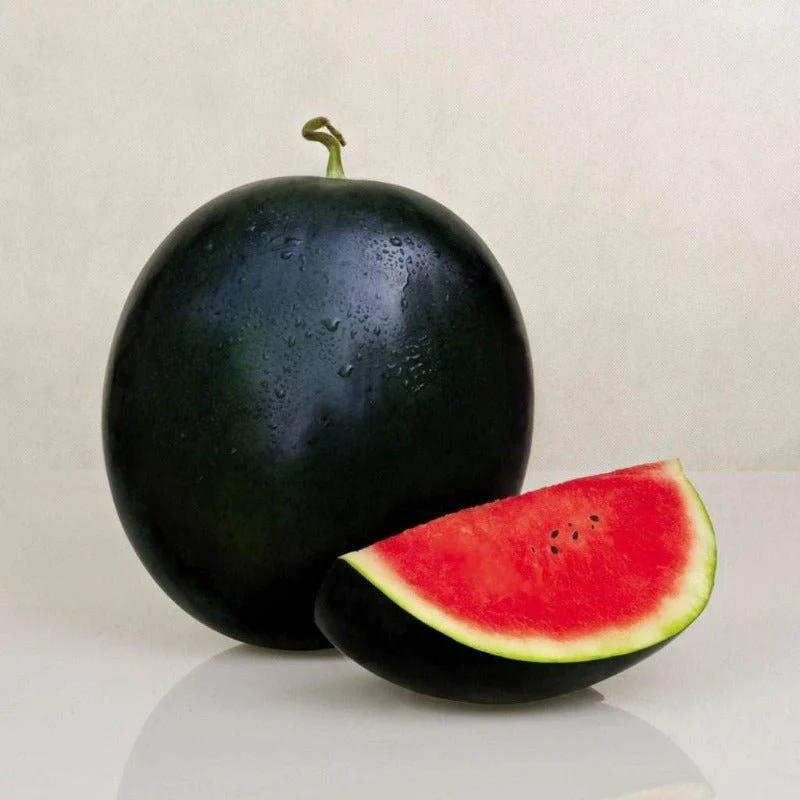
Maturity: 75–80 days
Fruit Size: 6–10 pounds
Vine Length: 3–5 feet
The classic small-space watermelon, ‘Sugar Baby’ is beloved by home gardeners for its rich flavor and manageable size. The melons are round, dark green, and bursting with crisp, ruby-red flesh that’s perfectly balanced between sweetness and juiciness.
This heirloom variety thrives in raised beds or medium-sized containers (20 gallons or larger). Its vines stay compact, and it matures earlier than most large watermelons — perfect for shorter growing seasons.
Why you’ll love it:
- Exceptionally sweet and fine-textured flesh.
- Compact vines — great for patios or small plots.
- Reliable yields even in cooler climates.
Tip: For the sweetest fruit, let melons fully ripen on the vine until the underside turns creamy yellow.
2. ‘Golden Midget’
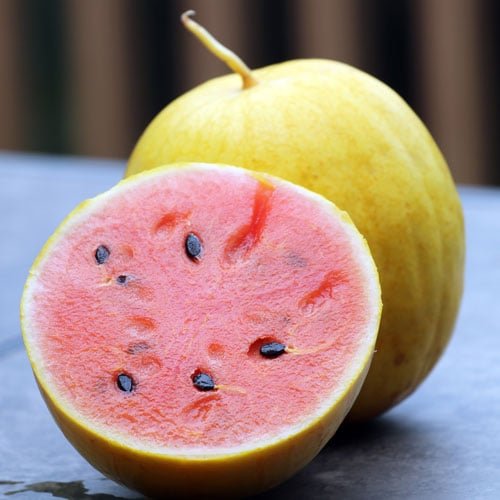
Maturity: 70 days
Fruit Size: 3–5 pounds
Vine Length: 3–4 feet
If you want a fast-growing, easy-to-spot watermelon, ‘Golden Midget’ is your match. This unique heirloom variety produces small, round melons with golden-yellow rinds when ripe — a fun and functional color change that signals perfect harvest time.
Inside, the flesh is deep pink and surprisingly sweet for such a small melon. Because it ripens in just about 70 days, it’s ideal for northern climates and gardeners with short summers.
Why you’ll love it:
- Compact vines and early maturity.
- Rind turns gold when ripe — no guesswork!
- Great for containers and raised beds.
Tip: Provide consistent moisture during fruit development for the juiciest results.
3. ‘Mini Love’
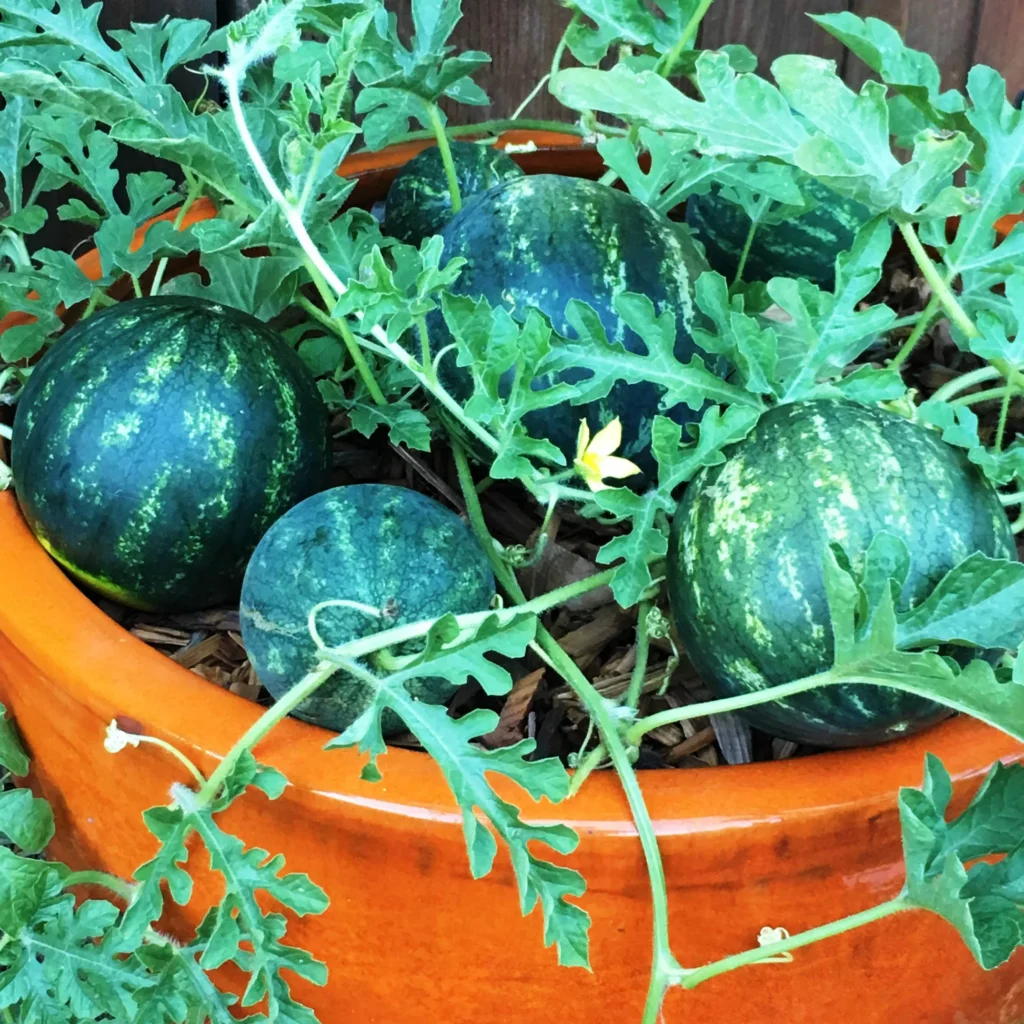
Maturity: 70–75 days
Fruit Size: 7–9 pounds
Vine Length: 4–6 feet
True to its name, ‘Mini Love’ is a small but mighty watermelon with tender, crisp flesh and a sugar-sweet flavor. The fruits are oval-shaped, averaging 8 inches long, and have dark green rinds with subtle striping.
This hybrid variety is known for high yields in limited space, making it perfect for small gardens. You can easily train the vines up a trellis or let them sprawl along the edge of a raised bed.
Why you’ll love it:
- Consistent yields of personal-sized melons.
- Disease-resistant and quick to mature.
- Great balance of sweetness and texture.
Tip: Use mulch to retain soil moisture and prevent the small fruits from sitting on damp soil.
4. ‘Bush Sugar Baby’
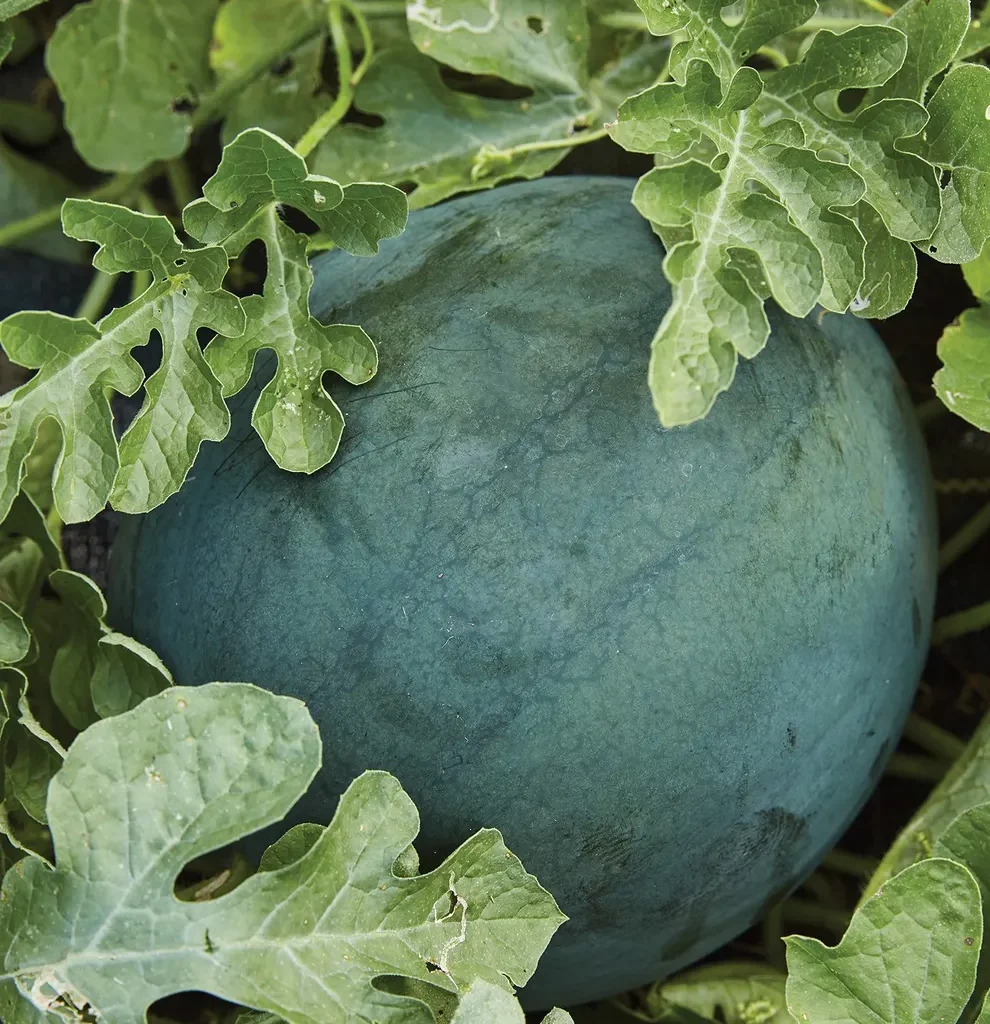
Maturity: 75 days
Fruit Size: 8–10 pounds
Vine Length: 2–3 feet
If you love ‘Sugar Baby’ but have very limited space, this compact cousin is your go-to. ‘Bush Sugar Baby’ offers all the same sweetness in a more space-efficient package. The vines are extremely short — only 2 to 3 feet long — making it one of the best options for container growing.
Despite its small footprint, it produces full-sized melons with rich red flesh and a sweet, classic watermelon flavor.
Why you’ll love it:
- Ultra-compact vines — perfect for patios or balconies.
- Produces full-size melons on small plants.
- Early harvest ensures success in cooler regions.
Tip: Grow one plant per large pot (at least 18 inches deep) with a sturdy trellis to support the vines.
5. ‘Little Darling’
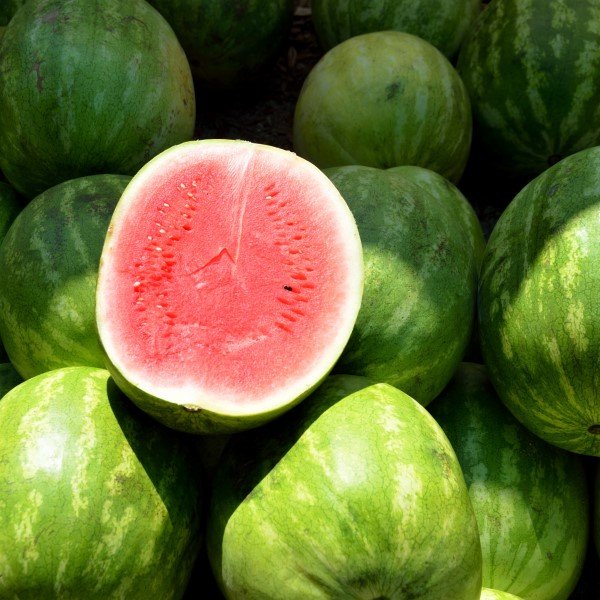
Maturity: 80–85 days
Fruit Size: 8–10 pounds
Vine Length: 4–5 feet
A newer hybrid designed for modern gardeners, ‘Little Darling’ delivers exceptional sweetness and crisp texture in a manageable size. The round fruits have thin rinds and bright red flesh that resists splitting, even under heavy watering or rainfall.
It’s slightly slower to mature than some compact types but makes up for it with superior flavor and long shelf life.
Why you’ll love it:
- Firm, sweet flesh that stores well.
- Compact vines ideal for small gardens.
- Excellent disease resistance.
Tip: Train vines vertically on a strong trellis and support each melon with a sling to save ground space.
6. ‘Sugar Pot’
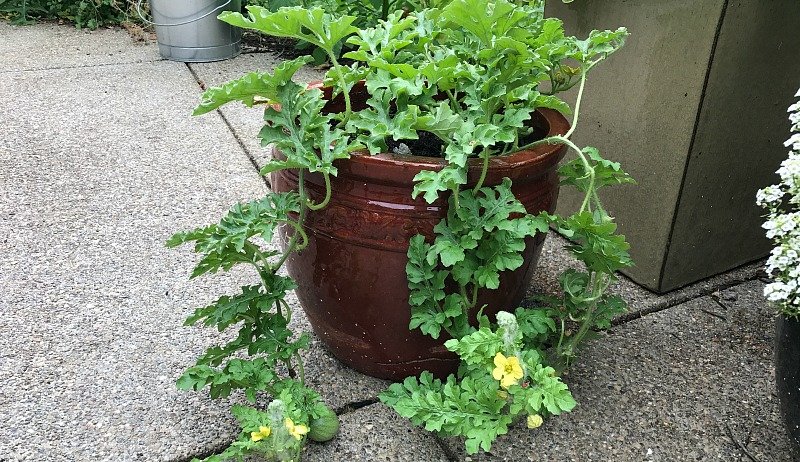
Maturity: 75–80 days
Fruit Size: 4–6 pounds
Vine Length: 3–4 feet
One of the newer container-friendly watermelons, ‘Sugar Pot’ produces charming, small round fruits that fit perfectly in your hand. The vines are compact yet vigorous, often yielding 2–4 melons per plant under the right conditions.
This variety thrives in pots or grow bags, provided it receives full sun and regular feeding. Its firm, deep-red flesh has that classic watermelon sweetness gardeners adore.
Why you’ll love it:
- Compact enough for balconies or small patios.
- Great productivity for its size.
- Excellent flavor and texture.
Tip: Feed every two weeks with a balanced liquid fertilizer once fruits start setting.
7. ‘Charleston Mini’
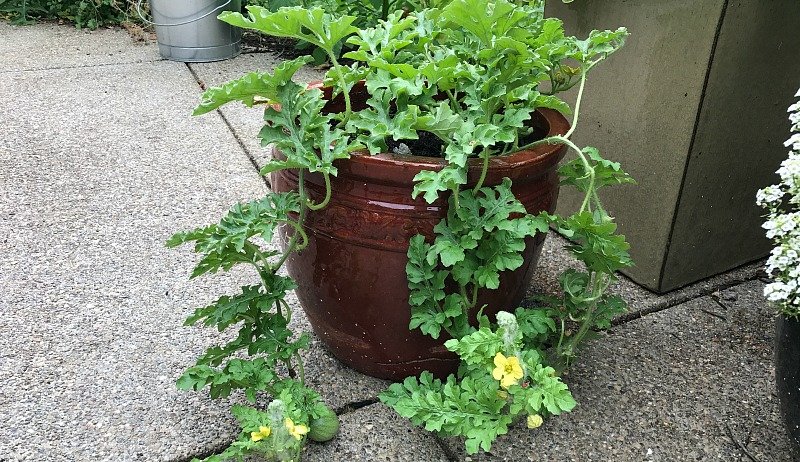
Maturity: 80–85 days
Fruit Size: 8–12 pounds
Vine Length: 4–6 feet
Inspired by the famous ‘Charleston Gray’ watermelon, this downsized hybrid delivers the same classic, old-fashioned flavor in a more manageable size. The melons are oblong with light green rinds and crisp, juicy flesh that’s sweet but not overpowering.
It’s perfect for gardeners who want a traditional watermelon experience without dedicating their entire yard to sprawling vines.
Why you’ll love it:
- True watermelon flavor in a smaller package.
- Disease-resistant and heat-tolerant.
- Perfect for raised beds and smaller plots.
Tip: Keep an eye on watering — consistent moisture prevents hollow hearts (gaps in the flesh).
Growing Tips for Compact Watermelon Success
No matter which variety you choose, a few key practices will help your small-space watermelon plants thrive and produce their sweetest fruit:
Sunlight
Watermelons love heat — aim for 8–10 hours of full sun daily. Less light leads to fewer, less flavorful fruits.
Watering
- Water deeply once or twice a week.
- Reduce watering slightly as fruits near ripening to concentrate sweetness.
- Avoid overhead watering to prevent leaf diseases.
Feeding
Use a balanced fertilizer early on, then switch to a phosphorus- and potassium-rich formula once flowering begins. Too much nitrogen encourages leafy vines instead of fruit.
Container Growing
If growing in pots:
- Choose containers at least 18–24 inches deep.
- Add trellises or slings to support fruits.
- Use high-quality potting mix for drainage and nutrition.
Pollination
Because watermelon flowers are separate male and female blooms, ensure good pollination by:
- Attracting bees with nearby flowers (like basil or marigolds).
- Hand-pollinating using a small brush if growing indoors or in screened spaces.
Final Thoughts
Growing watermelons doesn’t require acres of farmland — just a bit of creativity, sunshine, and the right varieties. From compact heirlooms like Sugar Baby and Golden Midget to modern hybrids like Mini Love and Little Darling, there’s a watermelon perfectly suited to your small garden or balcony.
These pint-sized powerhouses deliver the same sweetness and refreshment as their larger cousins — all in a fraction of the space.
So go ahead: pick your favorite variety, give it a sunny spot, and get ready to enjoy the unbeatable taste of homegrown watermelon — straight from your small garden paradise.
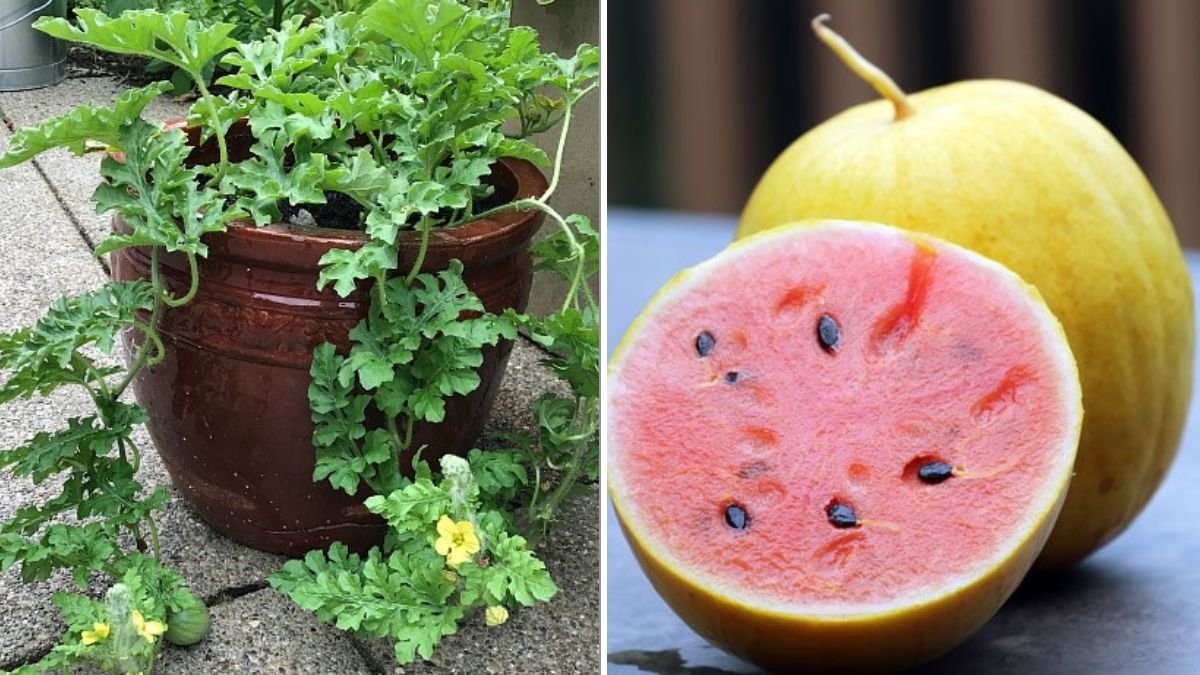





Leave A Comment